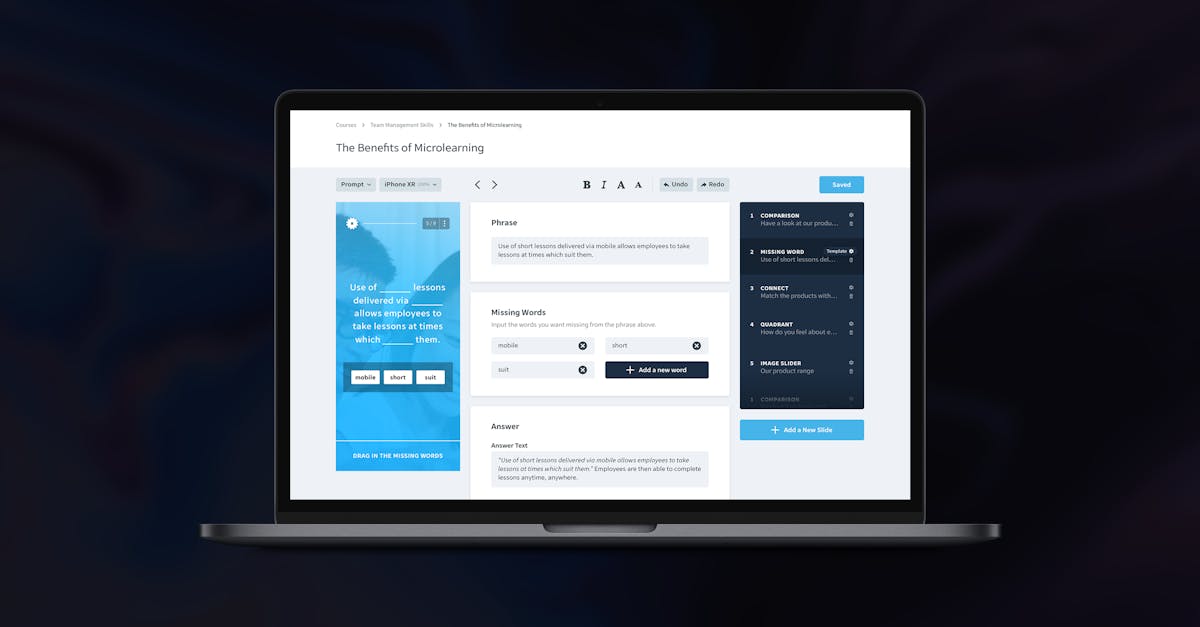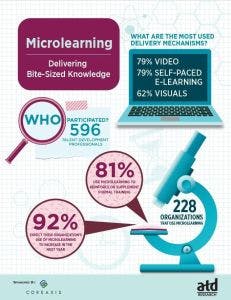Microlearning. By the numbers.

Each year, companies spend over 370 billion dollars on L&D globally. For context, that’s more money than the net worth of 119 countries around the world.
With this large of an investment, L&D professionals feel the pressure to use training methods that provide a clear ROI. That’s why many have turned to microlearning: learning in small, targeted bursts with achievable outcomes to increase the retention of information.
Microlearning has become somewhat of a buzzword in the eLearning industry. The question is: does it work? Is microlearning revolutionizing L&D?
Let’s dig into the data to find out.
Global microlearning trends and statistics
Microlearning is trending upward worldwide. It is projected that companies across the globe will spend more and more on this solution in the future. The industry “is expected to grow from USD 1.5 billion in 2019 to USD 2.7 billion by 2024” (source).
This explosive growth in microlearning is due to several factors:
1. Mobile learning
Over 45% of the world’s population, or 3.8 billion people, own a smartphone. Mobile devices make on-the-go learning accessible to more and more people every day.
Companies have seen training frequency increase when they allow employees to learn with a mobile device. When mobile training is available, companies have also seen a 40% increase in total productivity.
2. L&D cost reduction
Ray Jimenez, Ph.D., notes that microlearning can “reduce our development costs by 50% and increase the speed of development by 300%.” When companies use a microlearning LMS like EdApp to train employees, they can develop a training program at a fraction of the cost.In general, companies that invest effectively in L&D can experience 24% higher profit margins each year (source).
3. Brain science
According to the Ebbinghaus Forgetting Curve, humans forget over 50% of new information within 1 hour. They also forget over 70% of new information within 24 hours.
Microlearning helps combat this forgetfulness by presenting information in small, achievable chunks. These chunks repeat at an increased frequency (called spaced repetition) until the brain can store it long-term. Brain-friendly microlearning can potentially boost long-term retention rates above 90%.
4. Gamification
A microlearning LMS can seamlessly integrate gamification. Gamification turns learning into a game. Research shows that when content is gamified, motivation to complete work increases by 48% and productivity increases by 60%.
In tandem with microlearning, the game-based learning market is trending upward. It is expected that “revenues will surge to .3 billion by 2021” (source).
5. Completion rates
When companies use microlearning as a component of training, they see completion rates rise from as low as 15% to as high at 90% or more. Microlearning makes learning attainable and ensures that employees are thoroughly trained.
6. The modern worker’s needs
Modern workers desire personalized, social learning opportunities that help them grow professionally. With 76% of employees expressing the direct need for growth opportunities, microlearning is the perfect solution. It gives users the flexibility to learn what they want when they want.
7. Artificial intelligence and machine learning
Modern people want personalized experiences, period. According to Forbes, “73% of consumers prefer to do business with brands that take their personal preferences into account.” AI meets this demand by allowing L&D teams and companies alike to curate custom experiences.
In the learning space, AI works by providing relevant lessons to learners, personalized to their goals and abilities. L&D professionals can leverage AI to spend less time in the weeds and more time driving engagement.
8. Addressing L&D’s top priorities
Microlearning has been so successful globally because it helps meet L&D’s top priorities. These priorities include measuring the impact of learning, boosting self-directed learning, increasing engagement, and tracking analytics about knowledge gaps.
EdApp’s platform provides advanced analytics, AI, gamification, and more that gives L&D professionals a powerful tool to address these priorities.
Microlearning by industry
The top 3 industries that use microlearning are retail, manufacturing, and logistics, and finance and insurance. Across industries, 81% of companies use microlearning to reinforce or supplement training. 92% expect microlearning to increase over time:
Source: ATD Research

Companies across the board see the value in leveraging microlearning as an integral part of their training strategy.
Training trend: companies are going digital
Training delivery methods in 2019 saw an increase in online training and mobile learning. According to Training Magazine:
- “29.6 percent of hours were delivered via online or computer-based technologies, up from 25.6 per cent last year”
- “4.9 percent of training hours were delivered via mobile devices, up from 1.7 per cent in 2018”
While not all digital learning equals microlearning, training is trending upward in the direction of mobile and online delivery methods.
Top corporations that use microlearning
Walmart
Walmart made microlearning available to over 75,000 employees across the U.S. and the results were astonishing. The company saw a 54% decrease in safety incidents and a participation rate of 91%.

MARS
MARS has a presence in over 73 countries and has over 100,000 employees globally. After introducing microlearning through the EdApp platform, the leading FMCG company experiences average completion rates of 90% across 1,000 microlessons with EdApp.
Berkshire Hathaway Media Group
BH required a training solution to unify its sales protocol. When they implemented microlearning, 98% of employees agreed that the content was “not only useful but was also immediately applicable in their daily work.”

Pandora
Pandora is a jeweler famous for customizable jewelry and charms. Pandora started using microlearning to train sales staff. Through mobile microlearning, they experienced completion rates of over 80%. Additionally, 90% of employees expressed a preference for EdApp over their old eLearning system.
Sodexo
Sodexo is a global leader that provides world-class hospitality, food, and catering services. Before EdApp, Sodexo saw engagement levels of 32% when they used traditional eLearning. After applying our mobile-friendly microlearning solution, engagement in training has skyrocketed by over 88%.
Data dig: final thoughts
As microlearning trends upward, companies across the world have started to take note. The bottom line: data demonstrates that microlearning is a brain-friendly, cost-effective training solution.
In our globalized and mobilized world, companies looking to maximize their L&D investment should consider the possibilities of microlearning. Revolutionized training is here and it’s available at the click of a button.
Author
